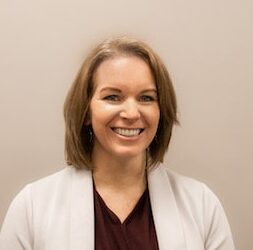STUDENT DEBT OUTCOMES
Students attending the Arkansas Colleges of Health Education are eligible to borrow Direct Unsubsidized Loans and Direct PLUS Loans as a graduate or professional student from Title IV, HEA programs.
STUDENT DEBT AVERAGE
The charts below provide the average debt borrowed by each graduating cohort class in Direct Unsubsidized Loans and Direct Graduate PLUS Loans for each program. Additional information about the other programs offered at the Arkansas Colleges of Health Education will be added after the inaugural class graduation.
Master of Science in Biomedicine
| Master of Science in Biomedicine | ||||
|---|---|---|---|---|
| Graduation Year | 2020 | 2021 | 2022 | 2023 |
| All | $14,905 | $28,543 | $26,477 | $26,103 |
| GENDER | ||||
| Female | $15,125 | $29,156 | $26,833 | $25,949 |
| Male | $14,811 | $27,317 | $26,366 | $26,243 |
| RACE/ETHNICITY | ||||
| American Indian or Alaska Native | * | $35,294 | $33,756 | * |
| Asian | $6,500 | $21,500 | $27,287 | * |
| Black or African American | $17,395 | $35,221 | $20,500 | $24,036 |
| Hispanic | * | $0 | $23,419 | * |
| Two or More Races | $11,395 | $20,431 | * | $21,003 |
| Race and Ethnicity Unknown | * | * | * | * |
| White | $18,194 | $29,318 | $27,993 | $29,894 |
| The figures included in the table above are based upon the average Direct Loan debt per student loan borrower within each graduating cohort. Figures are based upon loans borrowed while enrolled in ACHE’s Master of Science in Biomedicine program. Loans borrowed at other institutions are excluded. *Indicates values of less than 10 within each graduating cohort. |
||||
Doctor of Osteopathic Medicine
| DOCTOR OF OSTEOPATHIC MEDICINE | ||||
|---|---|---|---|---|
| Graduation Year | 2020 | 2021 | 2022 | 2023 |
| All | N/A | $246,041 | $244,809 | $258,390 |
| Gender | ||||
| Female | N/A | $241,945 | $239,752 | $245,336 |
| Male | N/A | $249,209 | $252,394 | $270,529 |
| Race/Ethnicity | ||||
| American Indian or Alaska Native | N/A | $6,669 | $215,900 | * |
| Asian | N/A | $248,540 | $218,429 | $248,875 |
| Black or African American | N/A | $255,524 | $278,619 | * |
| Hispanic | N/A | $269,920 | $211,071 | $286,578 |
| Two or More Races | N/A | * | $247,119 | $204,306 |
| Race and Ethnicity Unknown | N/A | $229,510 | $220,203 | $231,920 |
| White | N/A | $248,549 | $254,236 | $273,217 |
| The figures included in the table above are based upon the average Direct Loan debt per student loan borrower within each graduating cohort. The inaugural graduating cohort was 2021, which is why 2020 information is not available. Figures are based upon loans borrowed while enrolled in ARCOM’s program. Loans borrowed at other institutions are excluded. *Indicates values of less than 10 within each graduating cohort. |
||||
Cohort default rate
Federal student loan borrowers who make no payment for any period of 270 days will default on their student loans. Federal student loan default has negative financial consequences for the students who default and taxpayers.
To provide incentives to schools to work with their borrowers to reduce federal student loan default, the Dept of Ed calculates and releases an official Cohort Default Rate (CDR) to each school no later than September 30th of each year. Schools with low rates receive benefits and schools with higher rates are sanctioned and could lose eligibility to participate in federal student aid programs.
For schools having 30 or more borrowers entering repayment in a fiscal year, the school’s cohort default rate is the percentage of a school’s borrowers who enter repayment on certain Federal Family Education Loans (FFELs) and/or William D. Ford Federal Direct Loans (Direct Loans) during that fiscal year and default (or meet the other specified condition) within the cohort default period.
For schools with 29 or fewer borrowers entering repayment during a fiscal year, the cohort default rate is an “average rate” based on borrowers entering repayment over a three-year period. Because it takes three years to track the outcomes, the initial FY 2020 CDR for a school is not released until three years later, in 2023.
The Dept of Education publishes official cohort default rates for the past three fiscal years in a downloadable file accessible by clicking here and through a school search at NSLDS by clicking here.
See below for the previous four year’s Official Cohort Default Rates for all federal student loan borrowers attending any program at the Arkansas Colleges of Health Education.
| Official Cohort Default Rate – Arkansas Colleges of Health Education | |||
|---|---|---|---|
| *FY 2020 | FY 2019 | FY 2018 | FY 2017 |
| 0% | 0% | 0% | N/A |
| *Current year CDR FY2020 was released in 2023 had 34 borrowers who entered repayment in 2020 and of those 0 defaulted in FY2020, 2021 and 2022. |
|||
Please contact the Office of Financial Aid at (479) 308-2200 or via email if you have any questions about student debt outcomes at the Arkansas Colleges of Health Education.

